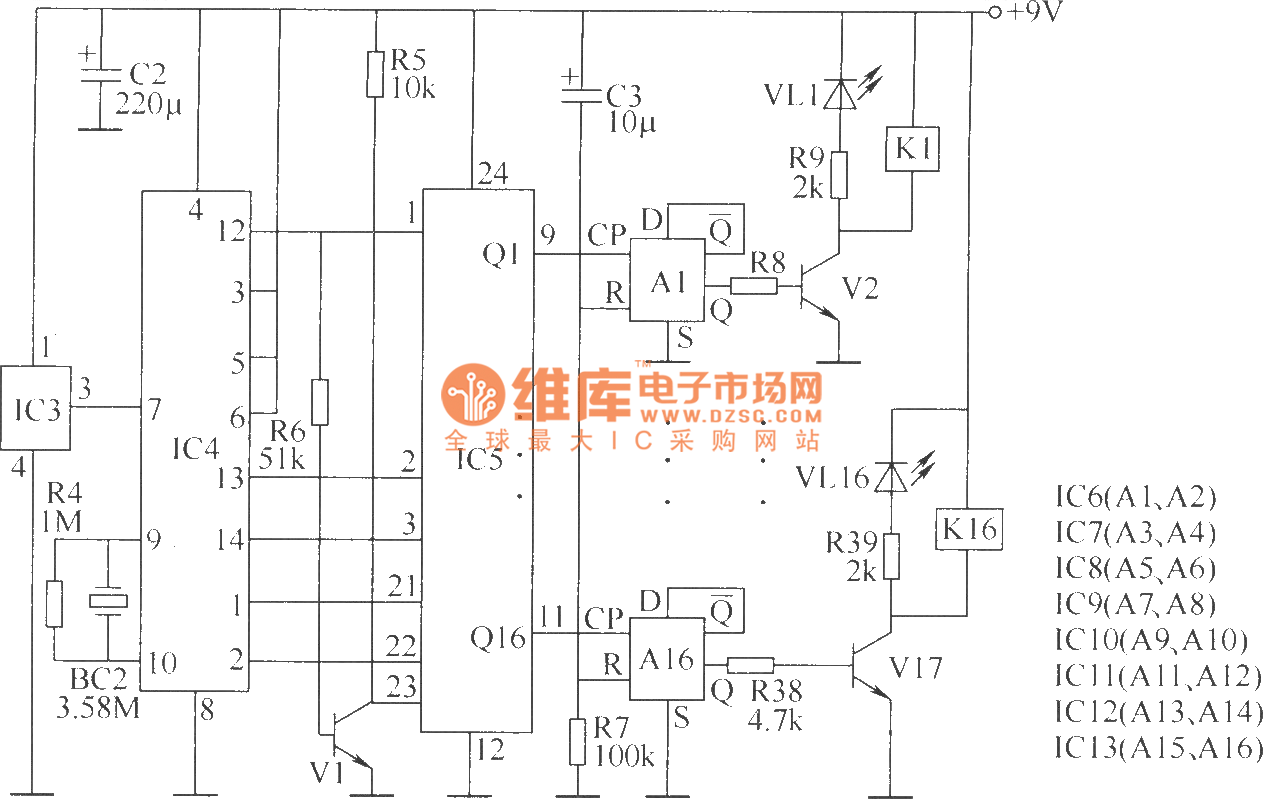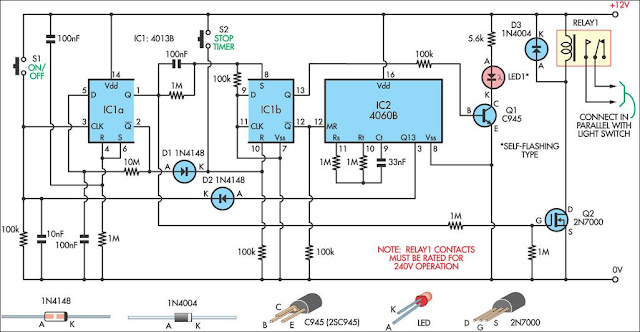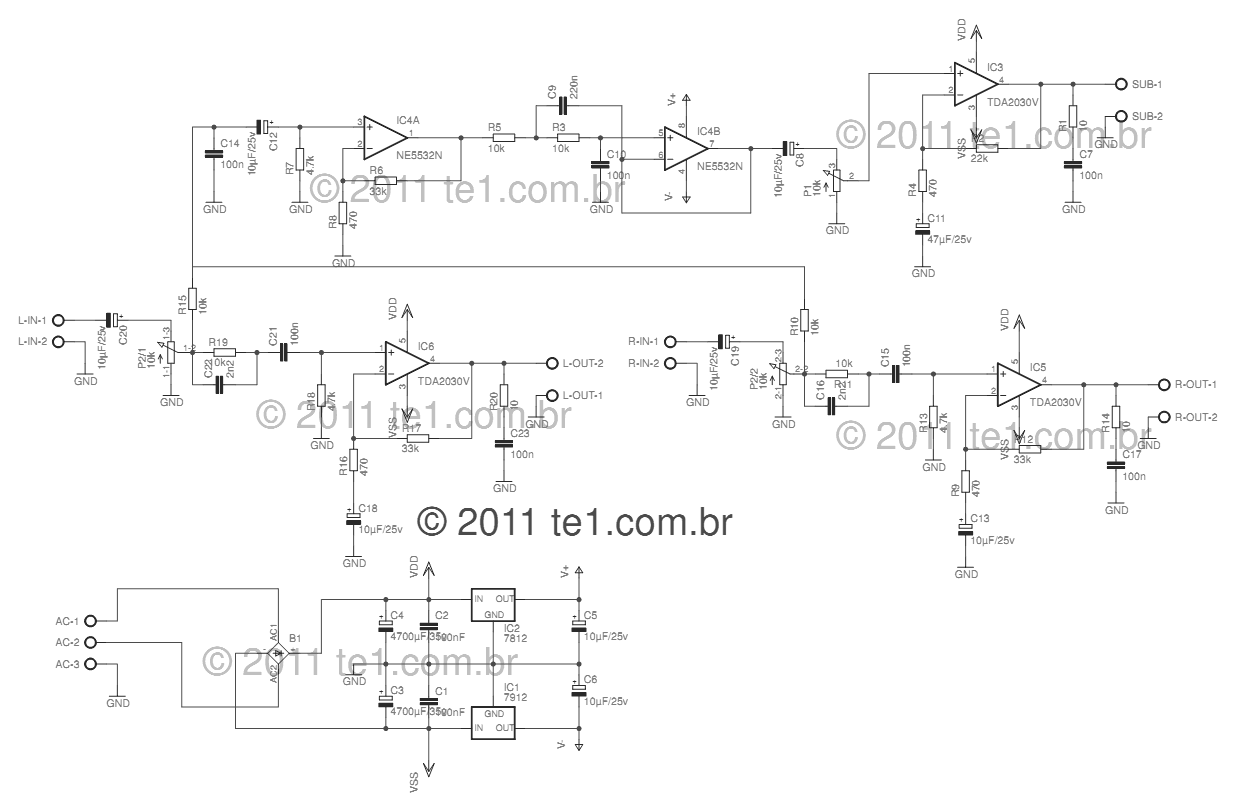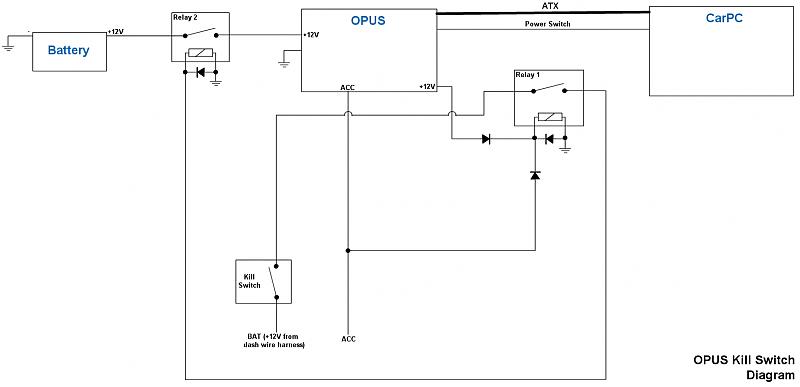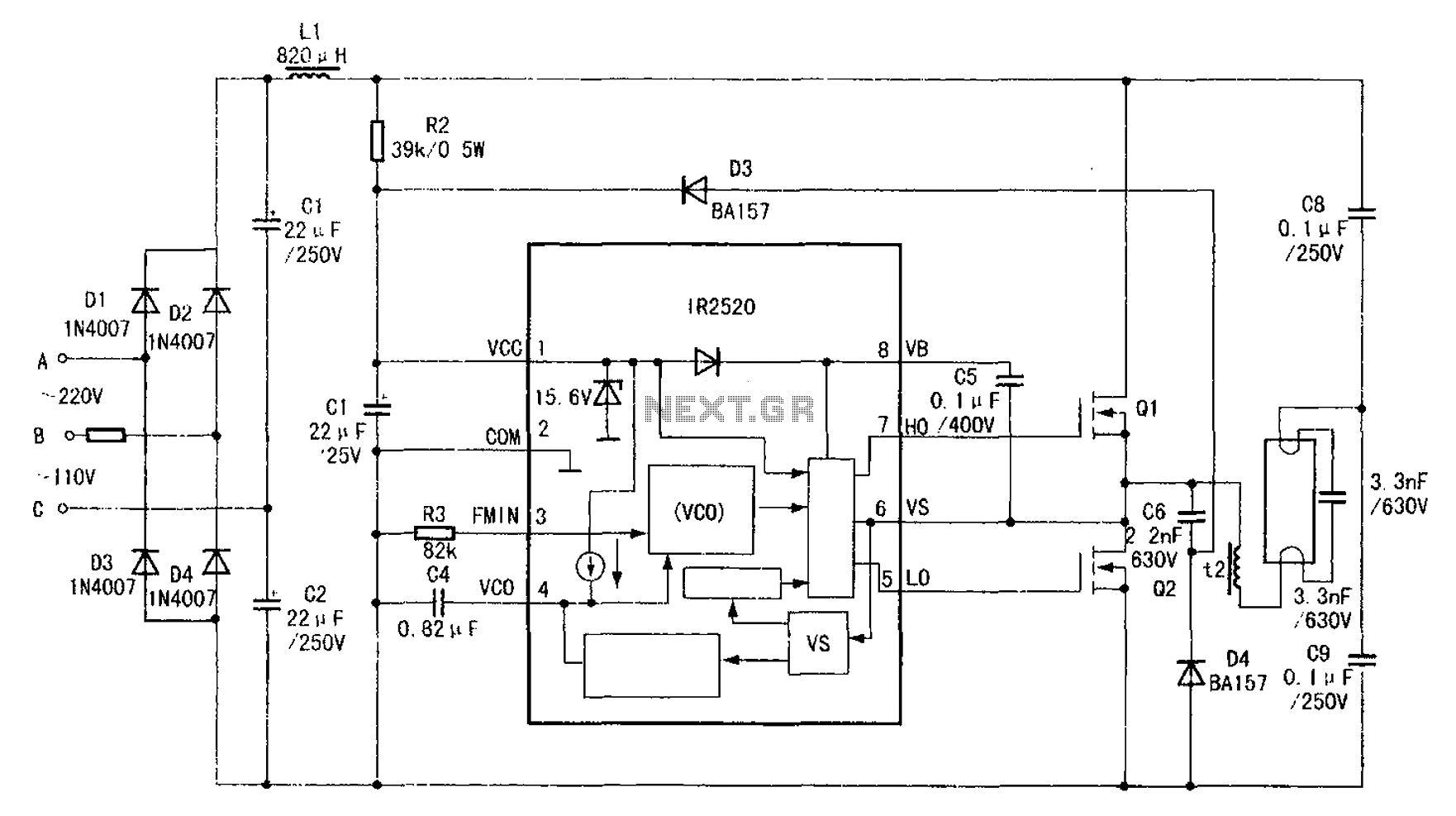
Current Sensing Slave Power Switch
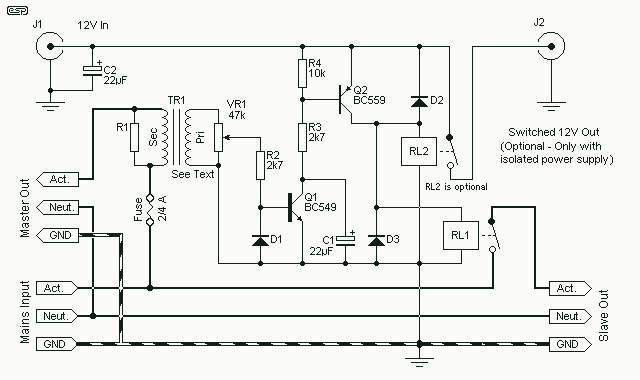
Switch on one unit, and everything else you need turns on automatically. This can save the tedium of turning on half a dozen different things, when one should be enough! This is another project created purely from necessity. In my case, it was to switch on all my computer peripherals when the PC was turned on, but I shall be building another very shortly to do the same with my Hi-Fi equipment.
The described project involves the creation of a master control switch that enables the simultaneous activation of multiple devices, such as computer peripherals and audio equipment, through a single action. The schematic for this project typically incorporates a relay or a series of relays that are activated by the main power switch of the primary device—such as a PC or audio system.
The relay serves as an electrically operated switch that can control the power to multiple outlets. The circuit design may include a low-voltage control circuit that is triggered when the primary device is turned on. This control circuit can be designed using a microcontroller or simple transistor switching, depending on the complexity required.
In a basic setup, a normally open (NO) relay is connected in parallel with the power switch of the primary device. When the primary device is powered on, the relay closes, allowing current to flow to the other connected devices. Additional features may include LED indicators to show the status of each device, fuses for overload protection, and possibly a delay circuit to prevent inrush current when multiple devices are powered simultaneously.
To enhance functionality, the design can incorporate a timer or programmable logic to sequence the power-up of devices, which can be particularly useful for audio equipment to prevent pops or clicks during startup. The inclusion of surge protection components, such as MOVs (Metal Oxide Varistors), can further safeguard the connected devices from voltage spikes.
Overall, this circuit aims to streamline the power management of multiple devices, providing both convenience and reliability in everyday use.Switch on one unit, and everything else you need turns on automatically. This can save the tedium of turning on half a dozen different things, when one should be enough! This is another project created purely from necessity. In my case, it was to switch on all my computer peripherals when the PC was turned on, but I shall be building another very shortly to do the same with my Hi-Fi equipment. 🔗 External reference
The described project involves the creation of a master control switch that enables the simultaneous activation of multiple devices, such as computer peripherals and audio equipment, through a single action. The schematic for this project typically incorporates a relay or a series of relays that are activated by the main power switch of the primary device—such as a PC or audio system.
The relay serves as an electrically operated switch that can control the power to multiple outlets. The circuit design may include a low-voltage control circuit that is triggered when the primary device is turned on. This control circuit can be designed using a microcontroller or simple transistor switching, depending on the complexity required.
In a basic setup, a normally open (NO) relay is connected in parallel with the power switch of the primary device. When the primary device is powered on, the relay closes, allowing current to flow to the other connected devices. Additional features may include LED indicators to show the status of each device, fuses for overload protection, and possibly a delay circuit to prevent inrush current when multiple devices are powered simultaneously.
To enhance functionality, the design can incorporate a timer or programmable logic to sequence the power-up of devices, which can be particularly useful for audio equipment to prevent pops or clicks during startup. The inclusion of surge protection components, such as MOVs (Metal Oxide Varistors), can further safeguard the connected devices from voltage spikes.
Overall, this circuit aims to streamline the power management of multiple devices, providing both convenience and reliability in everyday use.Switch on one unit, and everything else you need turns on automatically. This can save the tedium of turning on half a dozen different things, when one should be enough! This is another project created purely from necessity. In my case, it was to switch on all my computer peripherals when the PC was turned on, but I shall be building another very shortly to do the same with my Hi-Fi equipment. 🔗 External reference
